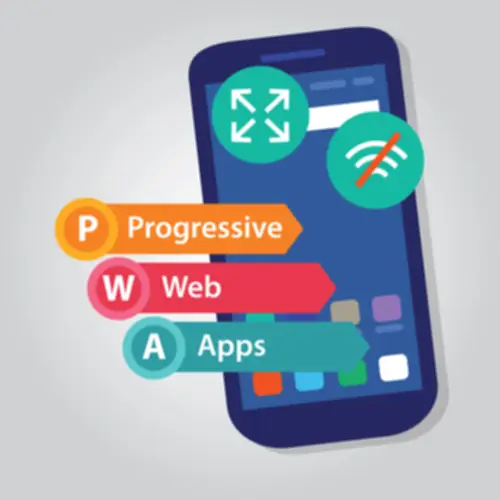A validation dataset is a pattern of information held back from training your model to tune the model’s hyperparameters. It estimates the performance of the final—tuned—model when deciding on between ultimate models. It is different from overfitting, where the model performs properly in the training set however fails to generalize the training to the testing set. Underfitting is another common pitfall in machine learning, where the mannequin cannot create a mapping between the enter and the target variable. Under-observing the options leads to a better error within the training and unseen knowledge samples. On the opposite hand, if the mannequin is performing poorly over the take a look at and the train set, then we name that an underfitting mannequin overfitting vs underfitting.

Model Overfitting Vs Underfitting: Models Vulnerable To Underfitting
One of the core causes for overfitting are fashions that have too much capability. A model’s capability is described as the flexibility to study from a specific dataset and is measured via Vapnik-Chervonenkis (VC) dimension. In order to discover a balance between underfitting and overfitting (the greatest mannequin possible), you have to discover a mannequin which minimizes the total error. Number of epoch and early stopping can be utilized to deal with underfitting conditions. As per your dataset, change hyperparameter and other variable inputs to get best fitting line.
Hanging The Best Balance: Constructing Strong Predictive Fashions

An instance of this situation could be constructing a linear regression mannequin over non-linear data. The circumstance by which the model generates expectations with zero inaccuracy is referred to be a stable match on the information. The current scenario is feasible someplace between overfitting and underfitting. To determine it out, we should take a look at our model’s display over time because it learns from the preparation dataset. As you continue your journey in machine studying, remember to carefully assess and adjust the model complexity primarily based on the problem, the available data, and the specified performance.

Eleven42 Defining, Coaching And Testing Model¶

One possible cause for underfitting is that your mannequin is simply too easy and doesn’t have enough parameters to learn the info. You can increase the mannequin capability by including more layers, neurons, or features to your community. This will allow your model to be taught extra complex and nonlinear capabilities that match the information higher. However, be careful not to overfit the info by adding an extreme amount of capability, as this could also hurt the efficiency and generalization. Consider a dataset with non-linear patterns, and the duty is to classify the cases into two courses. If a linear model is used, it could underfit the data by assuming a linear relationship and drawing a easy decision boundary.
- A excessive bias mannequin typically contains extra assumptions about the goal function or finish end result.
- A model with excessive variance will result in significant adjustments to the projections of the goal function.
- There have to be an optimal stop the place the mannequin would preserve a balance between overfitting and underfitting.
- On the other hand, the semester take a look at represents the check set from our information which we hold aside earlier than we practice our mannequin (or unseen knowledge in a real-world machine studying project).
These techniques help in controlling mannequin complexity, choosing optimum hyperparameters, and enhancing generalization performance. Underfitting happens when our machine learning model isn’t capable of seize the underlying pattern of the information. To avoid the overfitting within the model, the fed of coaching data may be stopped at an early stage, as a outcome of which the model might not be taught enough from the coaching knowledge. As a end result, it may fail to search out one of the best fit of the dominant trend in the data. Training loss measures this for the coaching information and validation loss for the validation data. Validation data is a separate dataset used to test the model’s efficiency.
Understanding the difference between the two is crucial for constructing models that generalize well to new knowledge. Underfitting is a standard problem encountered through the development of machine learning (ML) models. It happens when a mannequin is unable to successfully study from the training data, leading to subpar performance. In this text, we’ll explore what underfitting is, the way it occurs, and the methods to avoid it. A mannequin with excessive variance may characterize the information set precisely but could lead to overfitting to noisy or otherwise unrepresentative coaching knowledge. In comparison, a model with high bias might underfit the training data because of a much less complicated model that overlooks regularities within the data.
High bias and low variance are the most common indicators of underfitting. When there’s not enough training information, it’s thought of excessive toreserve a considerable amount of validation data, for the rationale that validation data setdoes not play an element in model training. In \(K\)-foldcross-validation, the original coaching knowledge set is split into \(K\)non-coincident sub-data sets. Every time the validation processis repeated, we validate the model using a sub-data set and use the\(K-1\) sub-data set to train the model. The sub-data set used tovalidate the mannequin is continuously modified throughout this \(K\)training and validation course of. Finally, the average over \(K\)training and validation error rates are calculated respectively.
We could take a look at the efficiency of a machine learning system over time as it learns coaching information to grasp this objective. We can plot the skill on both the training data and a take a look at dataset that has been stored separate from the coaching process. If the dataset is merely too small or unrepresentative of the true population, the model could wrestle to generalize properly.
Some of the procedures include pruning a choice tree, decreasing the variety of parameters in a neural network, and using dropout on a neutral community. Another possibility (similar to data augmentation) is including noise to the input and output information. In the case of supervised learning, the model goals to predict the goal function(Y) for an input variable(X).
For example, you ought to use less or no dropout, weight decay, batch normalization, or noise injection as regularization techniques for various layers and purposes. This will assist your model to study more freely and flexibly, with out being penalized or distorted by the regularization. With the passage of time, our overfitting and underfitting models will proceed to study, and the model’s error on preparation and testing information will continue to lower. Because of the presence of noise and fewer helpful particulars, the overfitting and underfitting mannequin will turn into more predisposed to overfitting if it learns for a protracted time. Overfitting happens when a model turns into too complex, memorizing noise and exhibiting poor generalization. To handle overfitting, we mentioned techniques such as regularization strategies (L1/L2 regularization, dropout), cross-validation, and early stopping.
The model ought to have the power to determine the underlying connections between the enter data and variables of the output. The perfect state of affairs when becoming a model is to find the stability between overfitting and underfitting. Identifying that “sweet spot” between the two permits machine studying fashions to make predictions with accuracy. Underfitting, however, occurs when a model is simply too easy to seize the complexity of the data.
Managing mannequin complexity usually includes iterative refinement and requires a keen understanding of your information and the issue at hand. Identifying overfitting can be harder than underfitting as a end result of in contrast to underfitting, the training knowledge performs at high accuracy in an overfitted mannequin. To assess the accuracy of an algorithm, a technique referred to as k-fold cross-validation is often used. To address underfitting, one can contemplate rising the complexity of the model.
2) More time for coaching – Early training termination might cause underfitting. As a machine learning engineer, you’ll find a way to improve the variety of epochs or improve the period of coaching to get higher outcomes. As demonstrated in Figure 1, if the model is too simple (e.g., linear model), it’ll have excessive bias and low variance. In contrast, if your mannequin is very complicated and has many parameters, it’ll have low bias and high variance. If you lower the bias error, the variance error will improve and vice versa. The noise time period \(\epsilon\) obeys a traditional distribution with a meanof 0 and a regular deviation of 0.1.
Transform Your Business With AI Software Development Solutions https://www.globalcloudteam.com/ — be successful, be the first!
